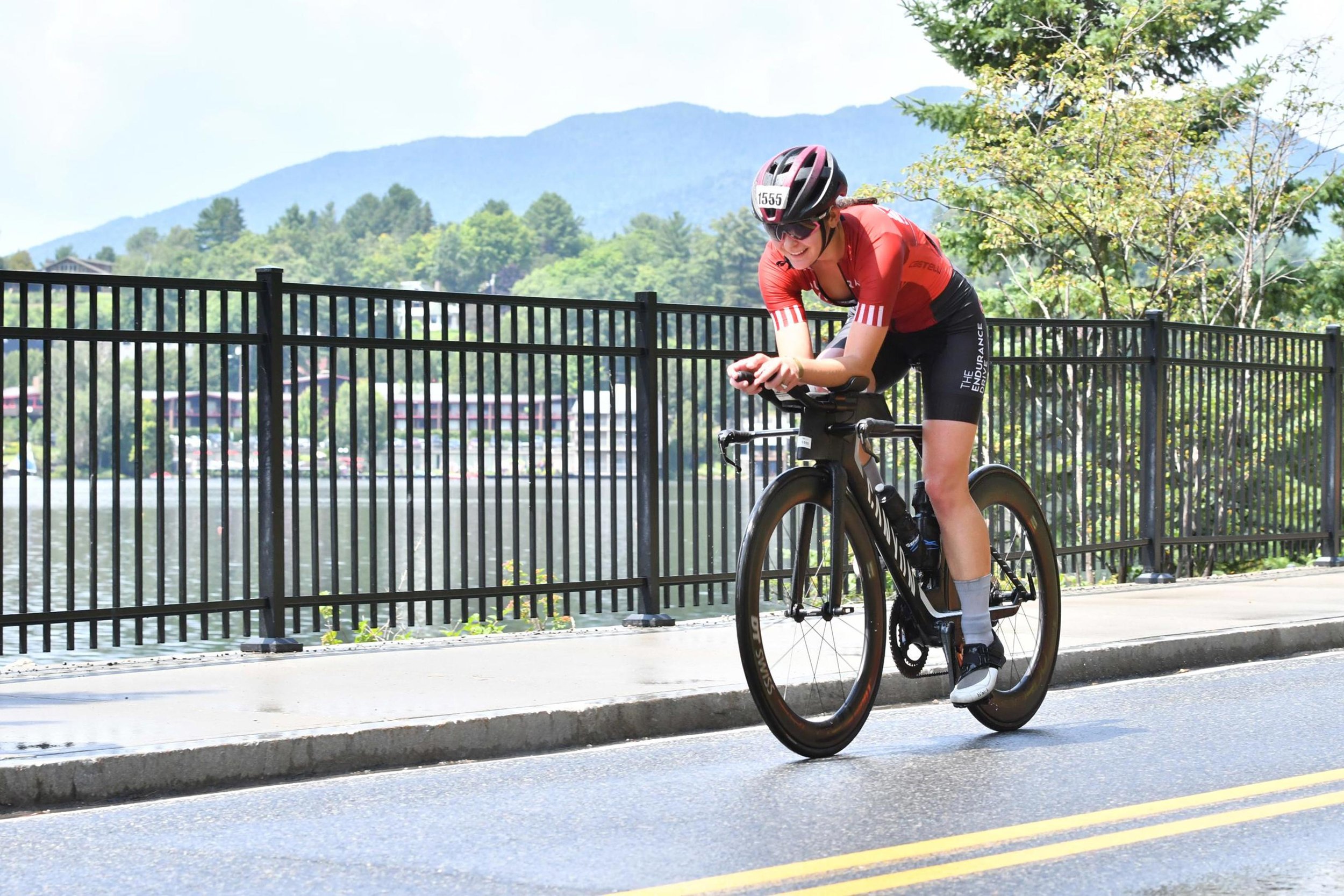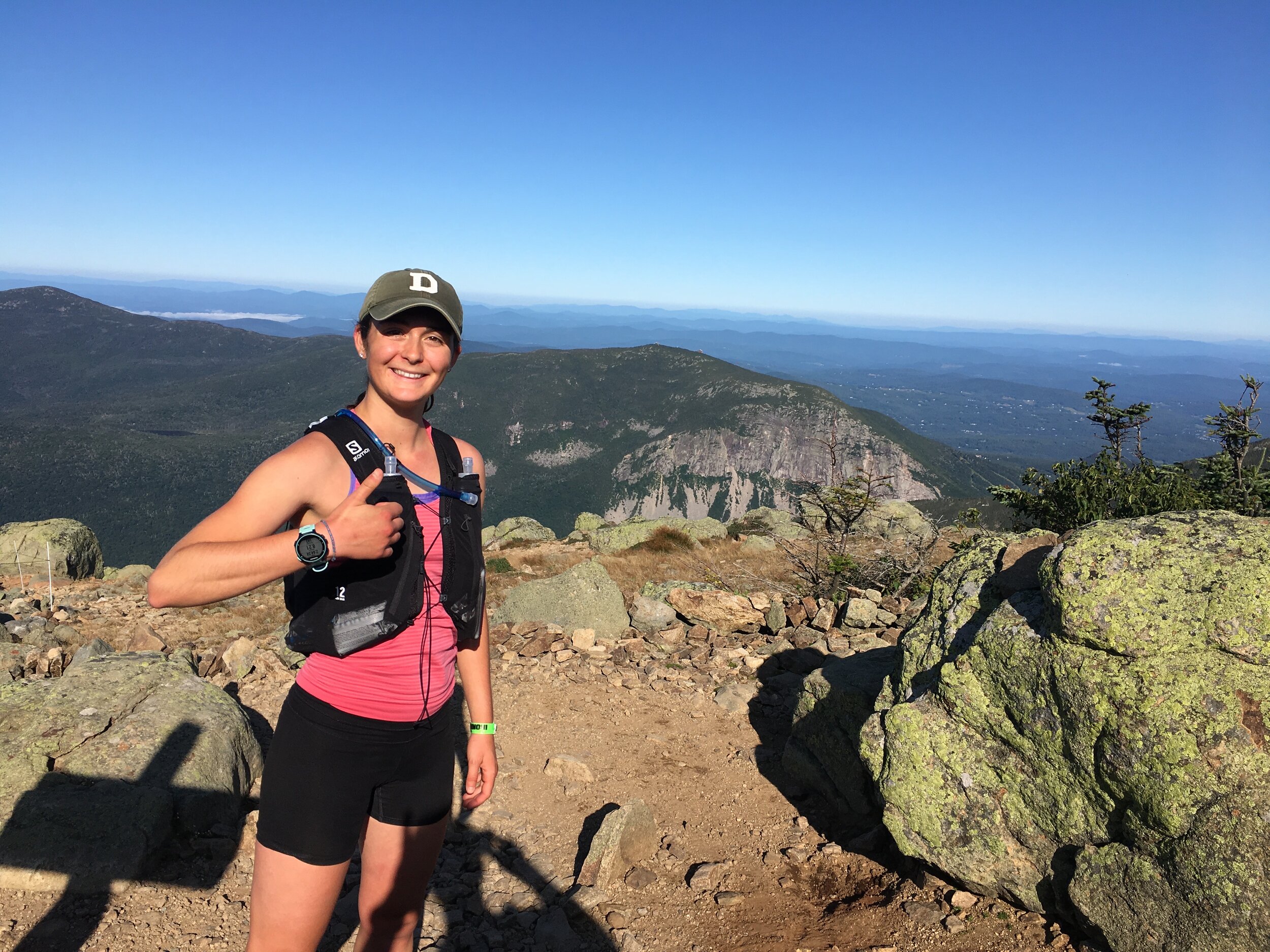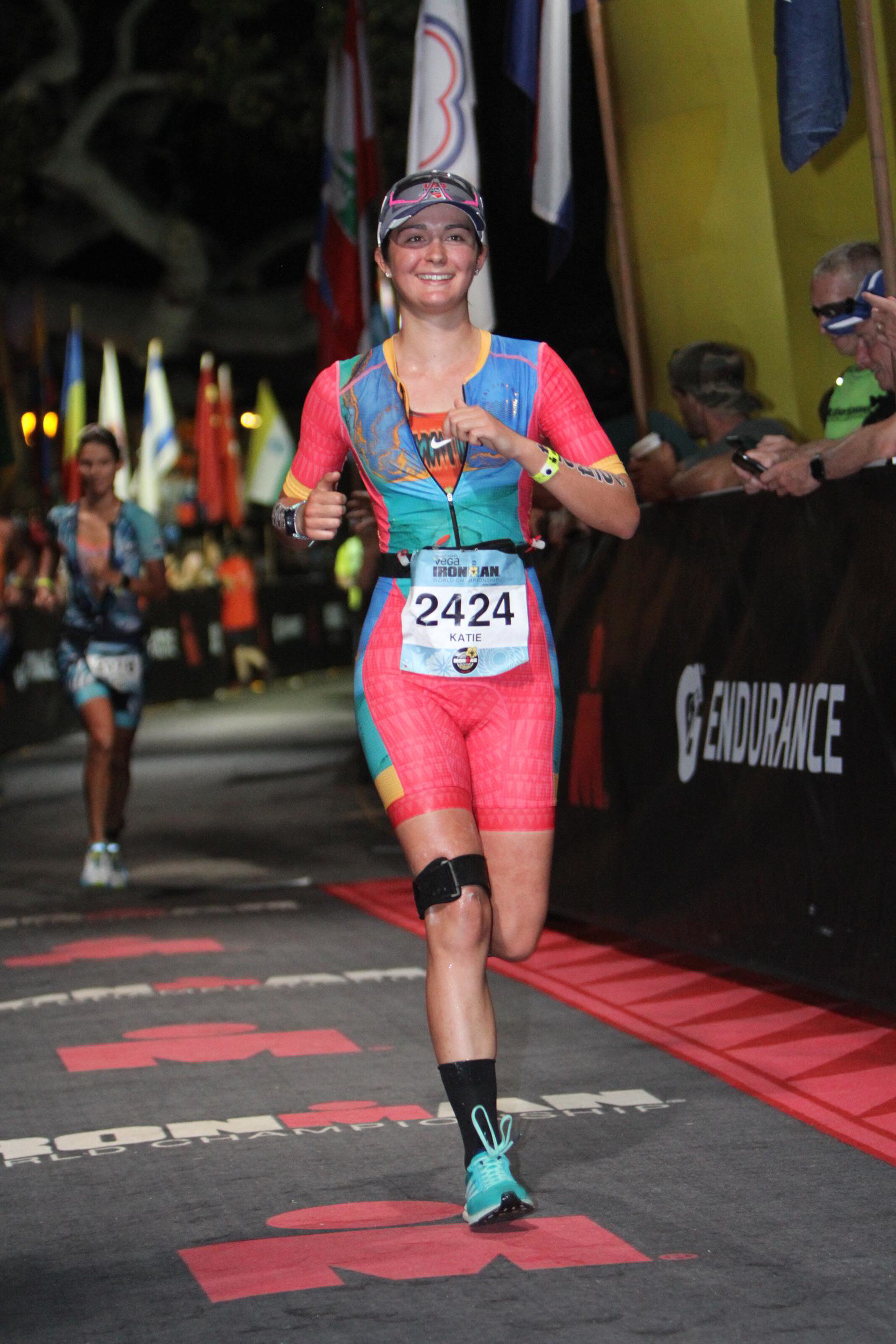Woohoo!! Happy to report that I crossed that magic finish line on Ali’i Drive once again! After a very long Ironman season and a “train a bit but mostly have fun” approach to the twelve weeks between Ironman Lake Placid and the world championships in Kona, I wasn’t sure what to expect from my body and mind on race day. Coming off an amazing day at Placid (which you can read about here), I was as low-stress as I have ever been going into an Ironman, and I think that the relaxed energy and have-fun mentality set me up well for a great race. Here’s the recap!
Pre-race: Travel to Kona was overall smooth. I broke up the journey from Boston to Hawaii with a 2-day stop at Stanford for some research meetings, and that helped me adjust to the time change and minimize the impact of long-haul travel on my body. I arrived in Kona on the Wednesday before the race and got a few solid pre-race swims, runs, and rides in. I also made sure to get any and all bike mechanical issues out of my system before race day with a full tire-and-tube overhaul at the “Canyon House of Champions,” where the Canyon staff were doing bike maintenance on all Canyon bikes for free. Betty finally begins to pay for herself!
My dad arrived on Thursday and Connor flew in on Friday, and Team Katie was ready and in position for the Saturday morning start. My age group (25-29) was in the second-to-last wave at 7:15, so we actually started after the first pro women (led by the unstoppable Lucy Charles-Barclay) had finished the swim. I hadn’t done a mass deep-water swim start since my last time in Kona, and I had forgotten how chaotic that format can be. The entire age group (plus the 18-24 year olds, who were grouped with us) had to swim out 100-200 yards to the starting line and then tread water there for a few minutes, jockeying for a good starting position while trying to stay afloat and not kick anyone. Wetsuits are not allowed at Kona because the water is so warm, but the added buoyancy of the salt water almost made up for it as we floated there waiting for the gun to go off. I stayed as far to the right as I could so I had a direct line to the first buoy, and at 7:15 exactly, the race began.
Swim: Historically I’ve felt that male athletes have been the most aggressive during triathlon swims, but the women of Kona proved me wrong! The long rectangular swim was chaotic and crowded for almost the entire time. I reminded myself that I had survived plenty of tough swims before, but that didn’t mean I enjoyed it when multiple people grabbed onto my shoulder or hip and pushed me down under the water as they fought for a good position. That said, I was probably guilty of doing the same, especially when I caught up with slower swimmers in the waves ahead of me, and the sheer number of people on the swim course made many of the collisions inevitable. My mild frustration at the chaos mostly melted away when one woman accidentally hit me on the arm as she took her stroke and actually took the time to shout “Sorry!” as my ear broke the surface. Apology accepted.
Despite the challenging conditions, a quick glance at my watch every time it beeped for 500 yards revealed that I was having a really strong (for me) swim. I had done almost no open water swimming since Ironman Lake Placid and had avoided long endurance sets in the pool because I don’t really enjoy them, but I was somehow going faster with each passing 500 and feeling really smooth despite the ocean swells and mild chop. Excitement about the strong effort propelled me forward to the end, and I was out of the water in 1:10, which was about six minutes faster than my first time in Kona and not far off my time from Placid. Surprisingly pleased with the result, I jogged through transition (with comfort-driven stops including a quick rinse with the hoses, chamois cream applied, sunscreen, and a snack), and then I was onto the bike.
Bike: The Kona bike includes a short out-and-back in town and then a very long out-and-back on the Queen Ka'ahumanu Highway (Queen K for short) all the way to a town called Hawi. It is notoriously known for sizzlingly hot pavement, relentless sun, high winds, humidity, and a surprising amount of elevation gain. Although it’s an intimidating course, I felt pretty confident about how to manage the conditions because I had done it before. For me, that meant prioritizing staying cool (with icy cold water bottles dumped all over me as I rolled through aid stations), fueling and hydrating as much as possible in line with my race plan, and staying in aero for most of the ride.
For Placid and most of my training, I had used power to guide my Ironman bike effort, but my power meter had been broken for a few weeks leading up to the race, and I had actually been enjoying using heart rate and perceived effort as a guide instead. After consulting with Jim, I decided to not try to get the power meter fixed in time for the race and instead would focus on three key stats: average speed, average heart rate, and current heart rate. We wanted to maximize average speed (which meant being as aero as possible, especially on flats and downhills) while keeping average heart rate at a sustainable level (in zone 2) and not letting current heart rate spike too high, especially on any climbs or very windy sections.
This strategy worked well for most of the ride, and after initially spiking in the first 20-30 minutes of the ride, my heart rate settled into a very sustainable zone. The beginning of the Queen K had a nice tailwind too, so my speed was looking great and I felt pretty comfortable as I headed out to Hawi. I did well with nutrition and hydration for the first 1.5-2 hours, and although it was already a scorcher out there, I was staying on top of the cooling pretty well by grabbing cold water bottles at the aid stations and dumping them down my back and on my head, then returning to the aero position.
After about two hours, I started to feel a bit nauseous and crampy, which was likely driven by the extreme heat and the salt water I had accidentally swallowed during the swim. It was really hard to take in any of the solid food I had in my bento box (something about a soggy, congealed bar stuffed into a hot plastic box was not really calling my name), but I had about 50 grams of carbs / 200 cal in each bottle with a mixture of Skratch Superfuel and LMNT, so I knew I would be okay (if not optimal) from a fueling perspective if I could finish the bottles. I stopped at an aid station for about a minute to pee right before the long climb to Hawi, and that very quick break did help me refocus for the climb, which had a stiff headwind the whole time and was relentlessly hot and sunny. (I still have not mastered the art of peeing while on the bike.) Watching the pro women on their return trip to Kona offered a nice distraction—I could see Lucy up front, followed by Taylor Knibb, and then a huge gap to the rest of the pack. One of the tough parts about racing is that you can’t really watch the pro women’s race unfold, so it was great to get a glimpse of what was going on as I rode.
When I got to Hawi, I stopped again briefly at bike personal needs to switch out the three bottles I had finished for three new ones I had sent ahead. Unfortunately, I had déjà vu to the World Champs in St. George when I grabbed the bottles and realized that they were, once again, hot from having sat out in the sun for most of the morning. In my nauseated and sweaty state it was very hard to motivate myself to drink down the tea-like fuel, and I started to get concerned that my nutrition strategy was going to fall apart. Luckily, the long downhill from Hawi gave me some time to let my heart rate settle and digest the liquid without expending as much effort, and I was able to finish one of the bottles and get back on top of my nutrition strategy.
The toughest part of the bike for me was from about miles 75-105, where we had a headwind, everything felt like it was uphill, and I was frankly just done being on the bike. I focused on just making it to the next aid station, and the next one, and the next one, and I got a few power-ups by grabbing the cold sport-top coke bottles they had stocked at the later aid stations (this was the only type of nutrition/hydration that felt appetizing at this point). In between, I worked together with a small group of women that were all about the same pace, staying the legal five-bike-lengths apart but keeping an eye on each other as a pacing strategy. I found that relative to other riders, I generally did well and would pass people on the climbs without much effort (a testament to my Upper Valley training), but was not as fast on the flatter or downhill sections since I don’t have access to a lot of that type of terrain.
In the last seven or so miles of the bike, I passed the pro women on the run course and cheered loudly for Lucy, who was still well on her way to the overall title. I was thrilled to be done and glad to have a pro race update, and as I descended back into town I began to prepare myself for the run. I finished the bike in 5:55:00, about a minute faster than my time at Lake Placid and a result I was really happy with given the challenging conditions.
Run: I again took a little bit of time to eat something quickly in transition and put on dry socks, and my legs felt pretty good as I jogged out onto the course. It was nearly the hottest time of the day—around 2pm—but I felt confident in my cooling strategy (ice down the kit and water on my head at every aid station) and knew that I could propel myself forward as long as I kept my heart rate in check and stayed on top of fueling and hydration. I saw my Dad and Connor in the first mile on Ali’i Drive and appreciated the familiar faces cheering me on.
The Kona run course starts with about 7 miles in town on Ali’i Drive with plenty of spectators to keep you energized, then features the infamously steep climb up Palani Drive to the Queen K, a long out-and-back with a turnaround in the notoriously hot and hilly Energy Labs section, and then a return trip on the Queen K and down Palani to the finish line on Ali’i Drive. I felt good on Ali’i Drive and made it through the first 12 or so miles without any walk breaks except a strategic power hike up the steepest section of Palani, and I did a good job of taking in the SIS gels every few miles and coke, ice, and water at most of the aid stations. It was fun to see my Dad and Connor at mile 8ish, and my Dad literally sprinted down the road so he could get a better video of me passing by—go Dad!
Past the top of Palani, my heart rate was steadily in the low-to-mid 150s at roughly 8:30-9:00 mins/mile, which was exactly in line with my race plan. Even so, morale was up and down—similarly to the early and middle miles of Ironman Lake Placid, it was a bit demoralizing to do the math of how many miles (and hours) I still had left to go when all that I wanted to do was lay down in front of an air conditioner. After the halfway point, I made a deal with myself and said I could take a short walking break at every aid station (just enough time to grab adequate hydration and fuel) as long as I ran everything else.
I soon found myself next to another woman around my age who seemed to be running at the same pace as me with the exact same aid station strategy, and we ended up sticking together for over ten miles and keeping each other on pace. It turned out that she had qualified at Lake Placid as well, and I was super grateful to have her by my side for those tough final miles. We were moving more efficiently than a lot of people around us at this point; the carnage was starting to set in and I was just glad to not be falling apart.
The sun started to set around mile 22 back on the Queen K, and at that point I knew that all I had to do was run home. I took my final aid station walk break at around mile 24, and then put my head down to pick up the pace for the final descent of Palani and turnaround on Ali’i Drive. That section felt longer than it had the first time, but I saw Connor at the bottom of Palani and again on Ali’i Drive, and I knew my Dad was at the finish line, so it was easy to break out a smile even though my body was beyond ready to be done. The crowds got louder and the lights got bright as I approached the famous Banyan Tree that stands behind the finish line, and I crossed the finish line once again to those magic words—this time announced by two amazing female announcers—Katie Clayton, you are an Ironman. Marathon time 3:57:46, total time 11:16:57.
General thoughts: Kona was a well-executed race for me. I hit my goals of swimming, biking, and running faster than my first time at Kona, and my overall time was my second-fastest Ironman (behind Placid earlier this year, which I’m glad remains my perfect golden race). I exceeded my expectations given my more relaxed approach to training since Placid, and feeling the fitness I had built early in the season shine through months later in a completely different environment was affirming. I’m also really proud of how low-stress I was going into and during the race, and I was glad to see that putting less pressure on the result didn’t really change my ability to perform and motivate on course. And it was amazing and inspiring to race with all women—more races should be like that!!
More broadly, I’m super happy with how the season came together and grateful to Jim for building a plan that helped me achieve all of my goals for the year (and maybe for several years!) in Ironman racing. I actually feel a lot of closure with the Ironman distance, and I’m proud of everything I have learned from over five years of looooong endurance events. I’m excited to focus more on unstructured adventures, trail running, and gravel riding next year, and I may try some shorter distance races and/or adventure races that don’t require 22-hour training weeks and as much time running and riding on pavement. Before that, though, I plan to fully embrace the off season and enjoy moving and adventuring for fun only. It’s been a long time coming!
Thank you to everyone for following along and for supporting my race and life journey! You all make this fun. :)










